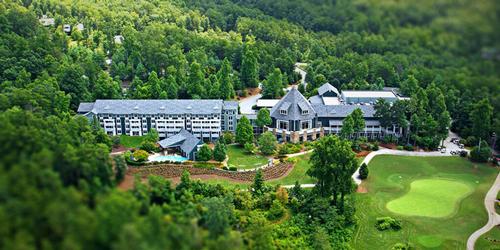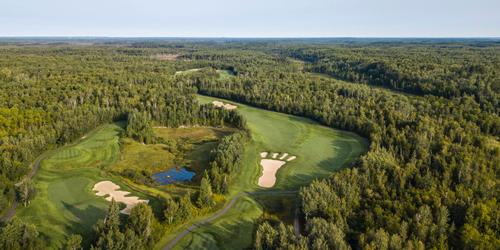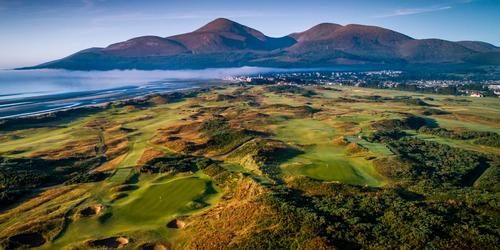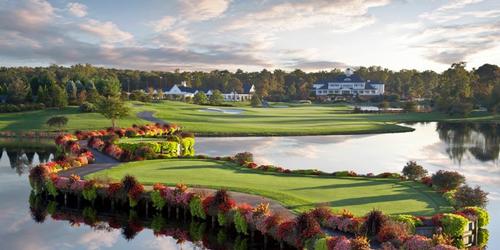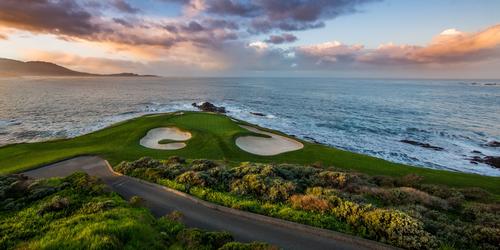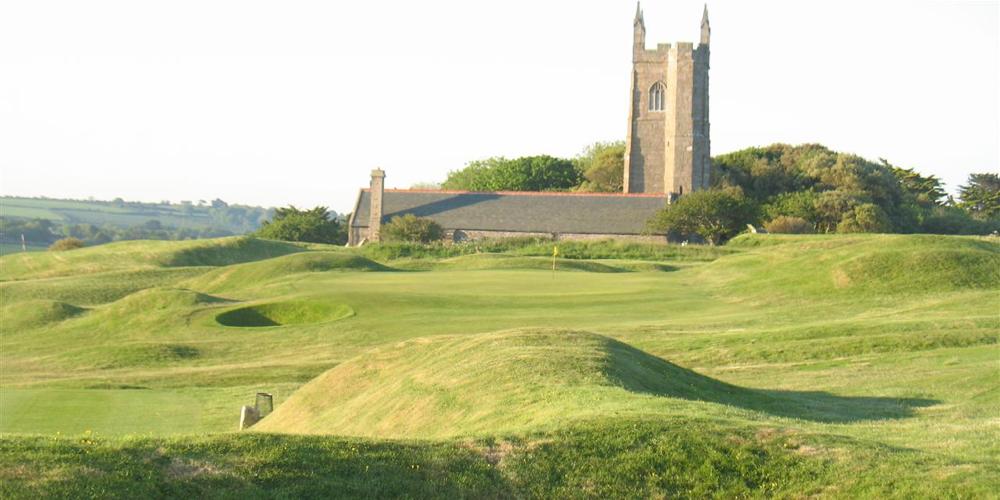
West Cornwall Golf Club Review
A Classic Cornish Links Experience
By Mike May
When you talk about playing golf in Great Britain, the conversation always seems to focus on those historic layouts in Scotland such as St. Andrews (both the Old and the New Course), Turnberry, Carnoustie, Muirfield, Kingsbarns, Royal Dornoch, and Royal Troon. While those courses deserve to be on everybody's 'must play' list, there are a number of great golf courses in the southwest of England that will satisfy your craving for the classic, British golf experience!
THE LOCATION
My personal favorite is located in the western part of England's most westerly county, Cornwall. The name of the course matches its geographic locale - the West Cornwall Golf Club (WCGC), www.westcornwallgolfclub.co.uk. This course is located in the village of Lelant, equidistant from the more well known communities of Penzance and St. Ives, both of which are fishing ports and vacation destinations for people from Britain and Europe. As the WCGC's website states, the West Cornwall Golf Club "has been moulded around the natural contours of the sand dunes that form part of the Hayle Estuary and Porth Kidney Sands. There are panoramic views from almost every hole with St. Ives Bay and Godrevy Lighthouse forming a memorable backdrop to this gem of a links."
According to West Cornwall Golf Club assistant pro Ian Harris, when this course was built back in the 1880s, it was one of two courses in Cornwall - the other being Perranporth Golf Club -- where the least amount of soil needed to be moved to build the course. In other words, what Mother Nature provided was the foundation for a brilliant links course. It remains a brilliant course to this day.
The West Cornwall Golf Club is the oldest golf course in Cornwall. It was built in 1889. The local church reverend - Rev. Tyacke - is given credit for designing this course. The course's website lists the WCGC as "one of the finest links courses in the county." It's true! It's a classic links course where wind is always a factor, the greens are true and consistent, and you have many options on every approach to every green.
"West Cornwall has been my English golfing home ever since I started playing golf as a pre-teen," said Neil Hodding, 56, who has been a member of the club for roughly 40 years and lives in nearby Carbis Bay. "I have lived and played golf around the world, but my golfing roots are firmly entrenched in that Cornish sand that's the foundation for the links at West Cornwall. There's something magical about those links. Every day, the conditions change which means you never play the same course twice! The views change daily, too, due to changes in sea conditions and the light. The views are stunning, particularly from the 12th tee, which has the best view I have ever experienced from a golf course. Simply said, the West Cornwall Golf Club is a beautiful place to be and a tough golfing challenge that never gets old. If you can break 70 around here on a calm day, you are a player."
A TOUR OF THE LINKS
At the second hole, the green is a raised putting surface, flanked by sand dunes to the left and right of the green. There are no bunkers around the second green either, but when you consider those sand dunes, the ever-present wind, and the trouble that exists beyond the green, there's no need for another hazard. This par four is 378 yards long, but it always plays longer than it appears on paper. Off the tee, make sure your tee shot does not drift to the right, otherwise, it might find a home in the sand dunes that border this fairway on the right. If you do finish in the dunes, you must simply take a baseball-like swing and hit your ball back down to the fairway. It's called 'taking your medicine.'
When standing on the fourth tee, make sure that you avoid hitting the ball right as you might finish in the graveyard of the St. Uny Church that borders this fairway. The graveyard is OB! The putting surface on the fourth is wide and deep. And there are no hazards or obstacles at the front of the green. When you play the 354-yard fourth, you will share the same fairway with golfers who are playing the eighth, who will be coming in the opposite direction.
West Cornwall's equivalent of 'Amen Corner' is known as 'The Triangle' - holes five, six, and seven. Of those three holes, two of them are par threes. The sixth is a dogleg, par four that is just 355 yards long from the tips. The key to the sixth is to find the fairway off the tee. The tee shot doesn't have to be long, but it must be accurate as there's trouble on this hole on either side of the fairway. When you play the sixth, it can play differently depending on the direction of the wind and the pin placement. When the wind is in your face and the pin is located at the back of the green, it will require a more aggressive club selection. The seventh is an uphill, par three which is always impacted by a prevailing breeze. Bogeys are more common than pars on this hole. If you can emerge from 'The Triangle' in par, count your blessings.
The par four ninth is uphill from beginning to end - 405 yards in length, but usually into the teeth of the wind which makes it play longer. It's rated as the toughest hole on the course. Give yourself a pat on the back if you par the ninth.
The tee shot at the 10th is blind. A solid tee shot won't move too much in the breeze, but if your tee ball veers right off your clubface, it will continue to drift right if the prevailing wind comes from your left. A strong breeze may push your ball out of bounds onto the nearby railway tracks. As the crow flies, the hole measures a mere 328 yards. Its degree of difficulty is enhanced by its two-tiered green and the five sand traps that surround the front portion of the green, making it one of the few holes at WCGC where there's trouble at the front of the green. By the way, there are no flat lies on the 10th fairway. Don't be surprised if you have a downhill stance with an uphill lie on the 10th fairway.
The 13th hole is a 268-yard, par four. The fairway slants from left to right and is filled with many undulations. On paper, the hole appears rather simple and straight forward. Because of the fairway's slanted nature and its uneven texture, a well-struck tee shot will be followed by a short iron off a downhill lie to a two-tiered green. At the 13th, the tee box is well above the fairway so the ideal tee shot will soar through the sky, but won't roll far once it hits the ground. Even though it's the shortest par four, a par is earned with two solid shots and two putts.
What's interesting about the 14th hole is what you can see from the teebox. From there, look due north where you'll see the St. Ives Bay with the Godrevy Lighthouse in the distance. You will also see the entrance to the Hayle Estuary. On sunny days, the breathtaking view is a 'Kodak Moment.'
If you don't pick the right club on the par three 15th, your shot will find one of the dozen sand traps surrounding the green. While a birdie is always a possibility at this short par three, many players have walked off the 15th with either a bogey or worse. The 15th can either be benign or a brute.
THROUGH THE GREEN
The WCGC is a par 69 layout for the men and a par 72 for the ladies. There are three sets of tee that play to the par 69. On paper, the course appears to be relatively short, but the conditions add a degree of difficulty that you can't comprehend until you play the course.
The West Cornwall Golf Club is a perfect course to walk as the distances between greens and tees are minimal.
As you walk down the 18th fairway, you will see a classic Cornish 'portrait' in the distance -- the WCGC clubhouse, the Hayle Estuary, the town of Hayle, and the Cornish countryside, complete with many hedge rows. The setting is serene.
For historians, you will be delighted to know that the West Cornwall Golf Club is the home of the World Golf Hall of Famer Jim Barnes - sometimes referred to as 'Gentleman' Jim Barnes or 'Long' Jim Barnes. In his professional career, he won the first two PGA Championships in 1916 and 1919 at the Siwanoy Country Club in Eastchester, NY and the Engineers Country Club in Roslyn Harbor, NY, respectively; the U.S. Open in 1921 at the Columbia Country Club in Bethesda, MD; and the 1925 (British) Open Championship at Prestwick in Scotland. He is one of 15 men to have won at least three of golf's four professional majors. In 1955, during a return visit to the club, Barnes played a round at West Cornwall in par -- using just one club, a three iron.
The late, great Open golf champion Henry Cotton once wrote this about the West Cornwall Golf Club: "Golfer will not easily tire of playing this course."
According to West Cornwall's club secretary Gareth Evans, five-time Open Champion and experienced golf course architect James Braid once visited the West Cornwall Golf Club, back in the day.
"Braid did come here, but there is no record of him making any changes (to the golf course) and if he did suggest any, the Committee of the time must have decided not to adopt them," said Evans.
When you play West Cornwall, bring all 14 clubs, a bag small enough for a pull cart, plenty of golf balls, a lightweight sweater, comfortable golf shoes.....and an adventuresome spirit! It will create a golfing memory that will last a lifetime.
Revised: 12/16/2019 - Article Viewed 10,264 Times
- View Course Profile
About: Mike May
![]() Mike May is a Wellington, Florida-based freelance golf and sportswriter, who is also a 25+ year public relations and communications executive in the sporting goods industry. He is also a veteran high school soccer official, an experienced high school basketball coach, an avid athlete, a part-time personal trainer, and a passionate golfer who is forever in pursuit of Old Man Par. He is a member of the Golf Writers Association of America.
Mike May is a Wellington, Florida-based freelance golf and sportswriter, who is also a 25+ year public relations and communications executive in the sporting goods industry. He is also a veteran high school soccer official, an experienced high school basketball coach, an avid athlete, a part-time personal trainer, and a passionate golfer who is forever in pursuit of Old Man Par. He is a member of the Golf Writers Association of America.
Contact Mike May:
GolfTrips.com - Contributor





